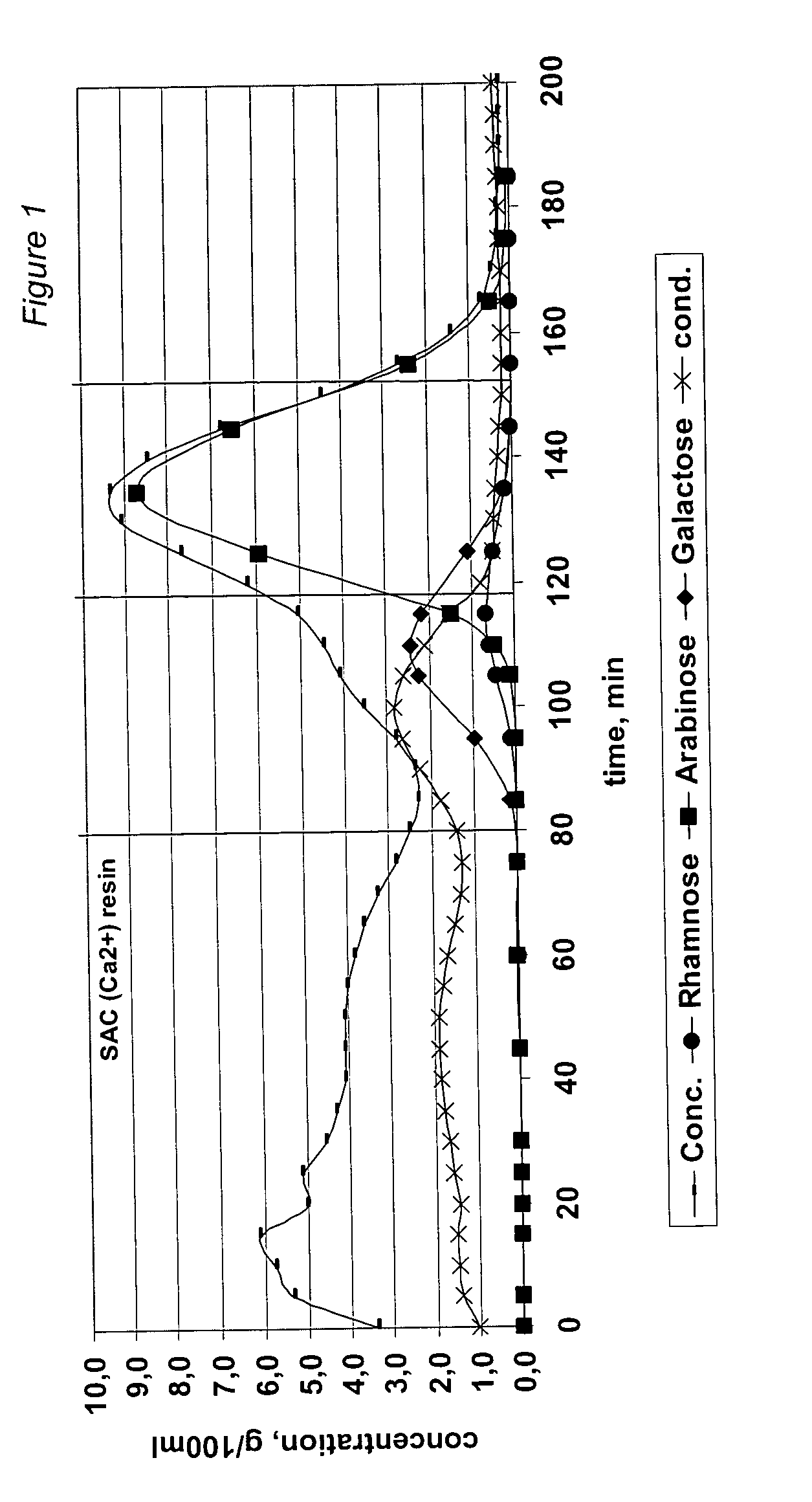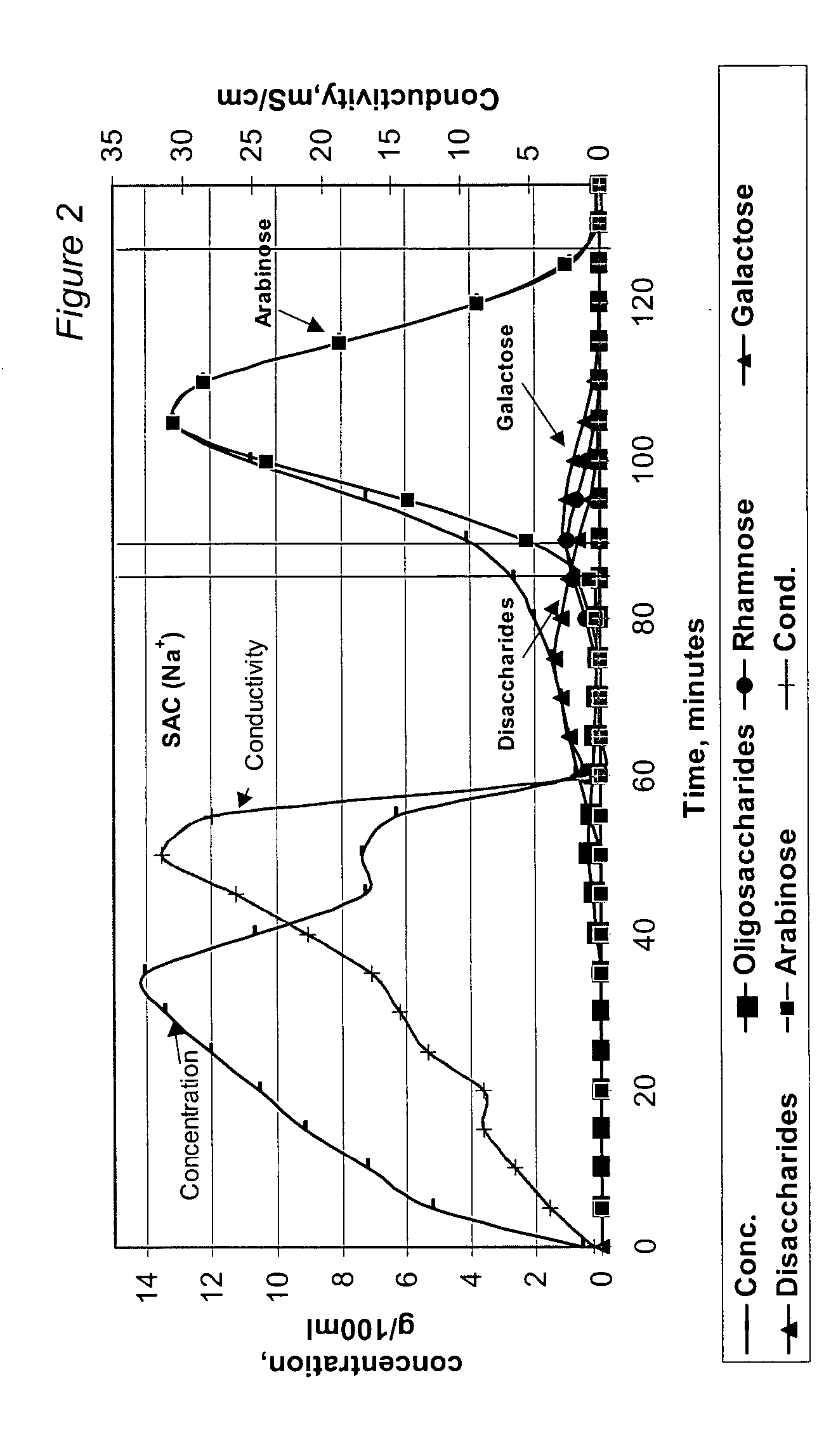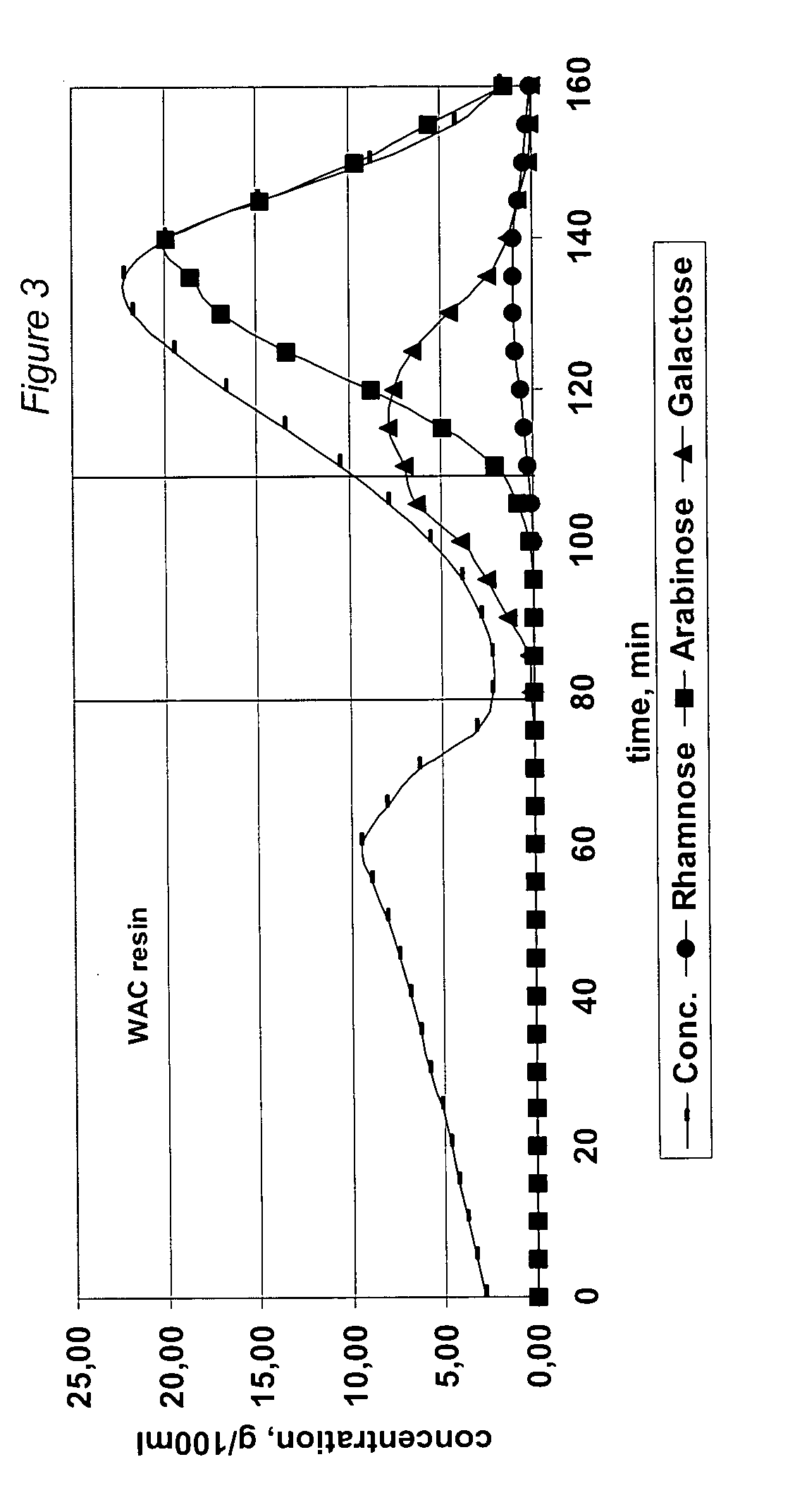Separation process
a separation process and arabinose technology, applied in the field of sugar separation technology, can solve the problems of inability to provide arabinose with a sufficient degree of purity, process disadvantage, and involvement of organic solvents, and achieve the effect of high purity
- Summary
- Abstract
- Description
- Claims
- Application Information
AI Technical Summary
Benefits of technology
Problems solved by technology
Method used
Image
Examples
example 1
Total Hydrolysis of Various Gum Arabic and Gum Ghatti Samples
[0162] The following gum arabic samples were subjected to hydrolysis with H2SO4: [0163] 1. Gum Arabic, spray dried (Merck 4228.1000) [0164] 2. Gum Seyal (Valspray F ref. 25500 (Valmar S.A.)) [0165] 3. Valcoat VM / 960 (Valmar S.A.) [0166] 4. Arabic gum Kibbled 56080 (Valmar S.A.) [0167] 5. Gum Acacia Seyal, Kibbled (Valmar S.A.)
[0168] Gum arabic sample No. 4 was milled with a hammer mill and screened with a sieve (1 mm). The other gum arabic samples were used as they were. The samples were hydrolyzed at a dry solids concentration of about 5% at a pH of 1 at various temperatures for one to six hours, cooled to room temperature and subjected to analysis.
[0169] The hydrolysis conditions (hydrolysis time and temperature) and the carbohydrate composition of the hydrolysis products after the hydrolysis (expressed as % on the oven-dried (105° C.) dry substance of the gum arabic) are presented in the following table (“oligosacch...
example 2
Selective Hydrolysis of Gum Arabic and Chromatographic Fractionation of the Gum Arabic Hydrolyzate with a Strongly Acid Cation Exchange Resin in Ca2+ Form.
[0173] (A) Preparation of the Gum Arabic Hydrolyzate:
[0174] 9.25 kg of Gum Arabic Seyal (Valspray, Valmar S / A) was poured into 40 liters of water in a batch reactor. The solution was solubilized over night under agitation. The pH of the gum solution thus obtained was adjusted to 1.07 with 4 kg of 20% H2SO4 and the solution was heated to 95° C. The temperature of the solution was maintained at 94 to 96° C. with gentle agitation. Then the reaction was stopped by cooling the solution to 60° C., followed by neutralizing the solution with 3.12 kg of 20% Ca(OH)2 slurry to a pH of 3.4. The solution was filtered with a Büchner funnel and paper using diatomaceous earth as a filtering aid.
[0175] The sugar content of the hydrolyzate was determined at various stages of hydrolysis as well as after the neutralization. The levels of rhamnose...
example 3
Chromatographic Fractionation of a Gum Arabic Hydrolyzate with a Strongly Acid Cation Exchange Resin in Na+ Form
[0185] The feed solution for the separation was a gum arabic hydrolyzate prepared in accordance with Example 2(A). The hydrolyzate, which mainly contained arabinose, galactose and rhamnose, had been neutralized with Ca(OH)2 and NaOH and filtered with diatomaceous earth.
[0186] The feed solution had the following composition (% on RDS):
Arabinose30.9Galactose2.3Rhamnose1.7Others65.1
[0187] The solution having the composition presented above was subjected to chromatographic separation. The separation was performed in a pilot scale chromatographic separation column as a batch process. The column with a diameter of 0.2 m was filled with a strongly acid cation exchange resin (5.5% DVB). The height of the resin bed was approximately 7.95 m. The average particle size of the resin was 0.35 mm. The resin was regenerated into a sodium (Na+) form. The temperature of the column and ...
PUM
| Property | Measurement | Unit |
|---|---|---|
| temperature | aaaaa | aaaaa |
| melting point | aaaaa | aaaaa |
| melting point | aaaaa | aaaaa |
Abstract
Description
Claims
Application Information
 Login to View More
Login to View More - R&D
- Intellectual Property
- Life Sciences
- Materials
- Tech Scout
- Unparalleled Data Quality
- Higher Quality Content
- 60% Fewer Hallucinations
Browse by: Latest US Patents, China's latest patents, Technical Efficacy Thesaurus, Application Domain, Technology Topic, Popular Technical Reports.
© 2025 PatSnap. All rights reserved.Legal|Privacy policy|Modern Slavery Act Transparency Statement|Sitemap|About US| Contact US: help@patsnap.com



